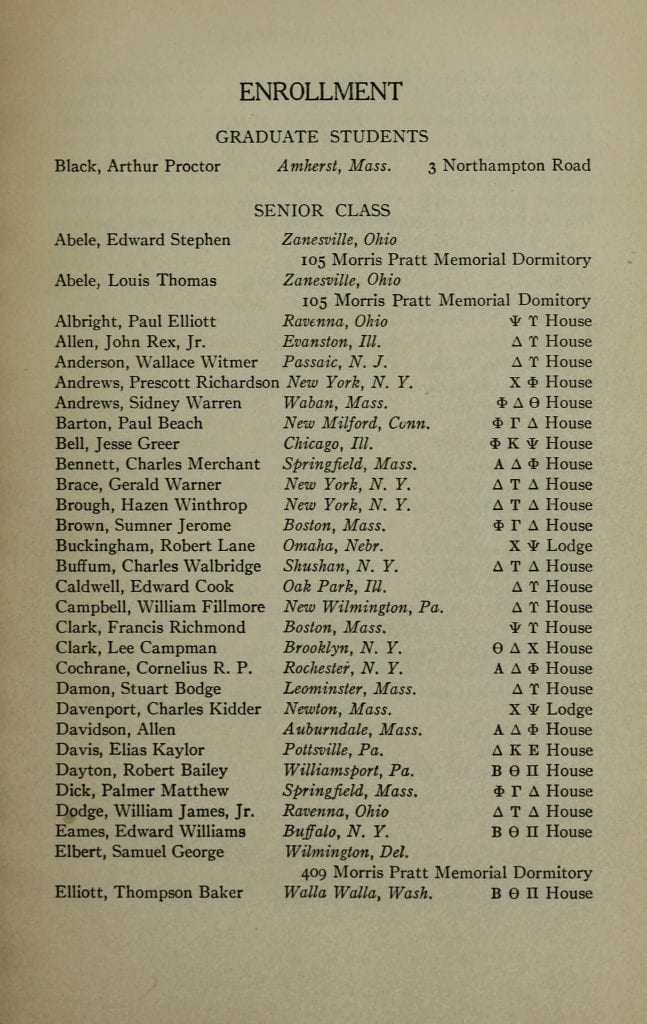As the crew in the Archives and all of Frost Library has shifted gears to work remotely, we want to offer more information about how to use the resources we have put online over the past 5+ years. One of the most frequently used resources in the Archives is the collection of past college catalogs, all of which can be found in Amherst College Digital Collections. Here are some examples of how we use these in our daily work.
The first catalog issued by the “Collegiate Institution” appears in March 1822 and is very bare-bones.
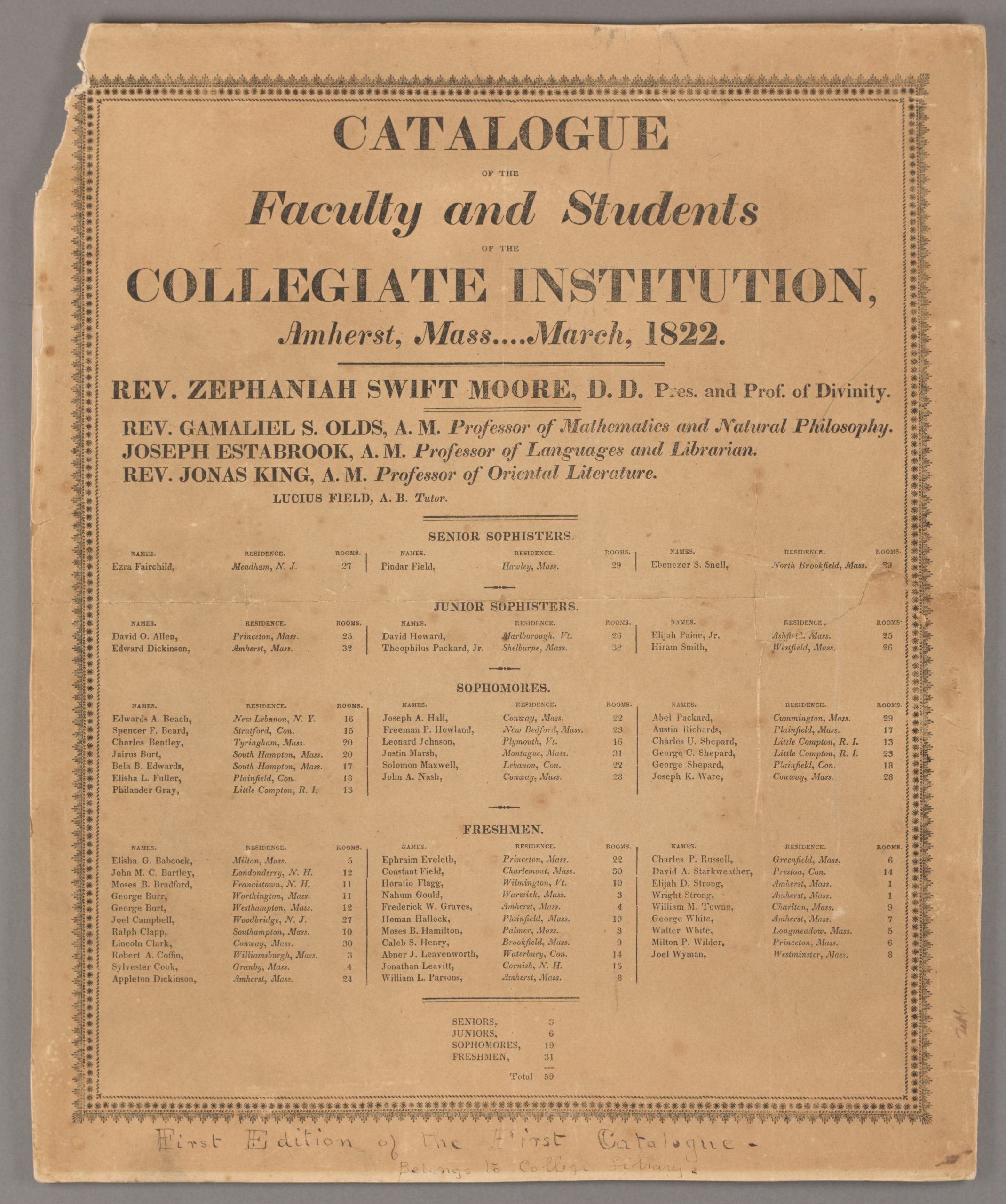
This document provides a lot of information: we know the names of the faculty and their subjects, we also know the names of the students in each class, their home town, and their campus address. Since there was only one building at this time (South College) the addresses are just room numbers in a single building.
That simple student-directory information is extremely useful when researching life at the college. In 1850 Amherst student George Gould (AC 1850) invited his classmate’s sister — Emily Dickinson — to attend a Valentine’s Eve candy pulling at “Miss Montague’s”:
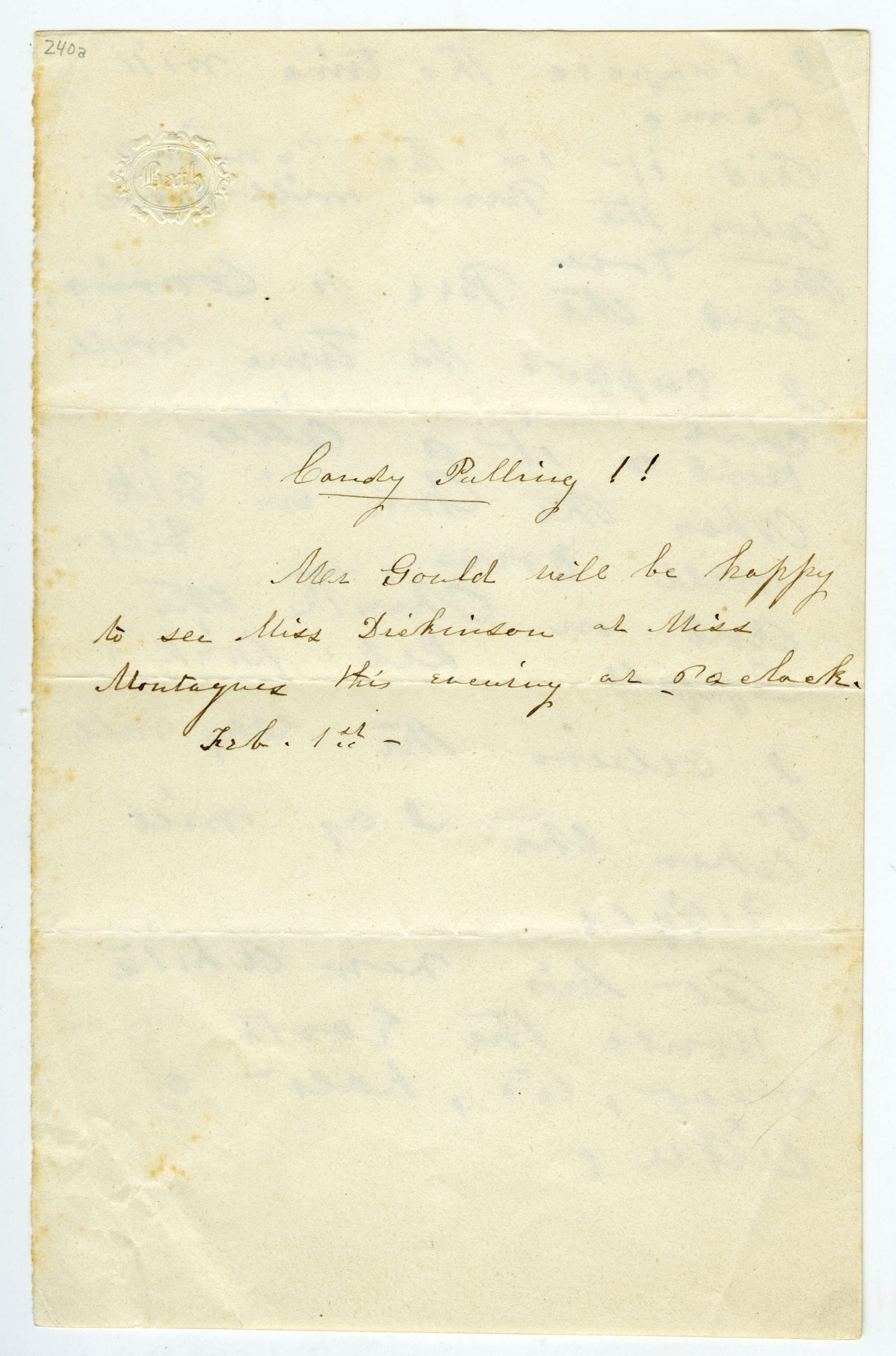
In the period when Amherst had limited dormitory space for a growing student body, many students lived in boarding houses instead of on campus. We can turn to the catalog for the 1849-50 academic year to find James Buckland of St. Louis, MO living at “Miss Montague’s” boarding house:
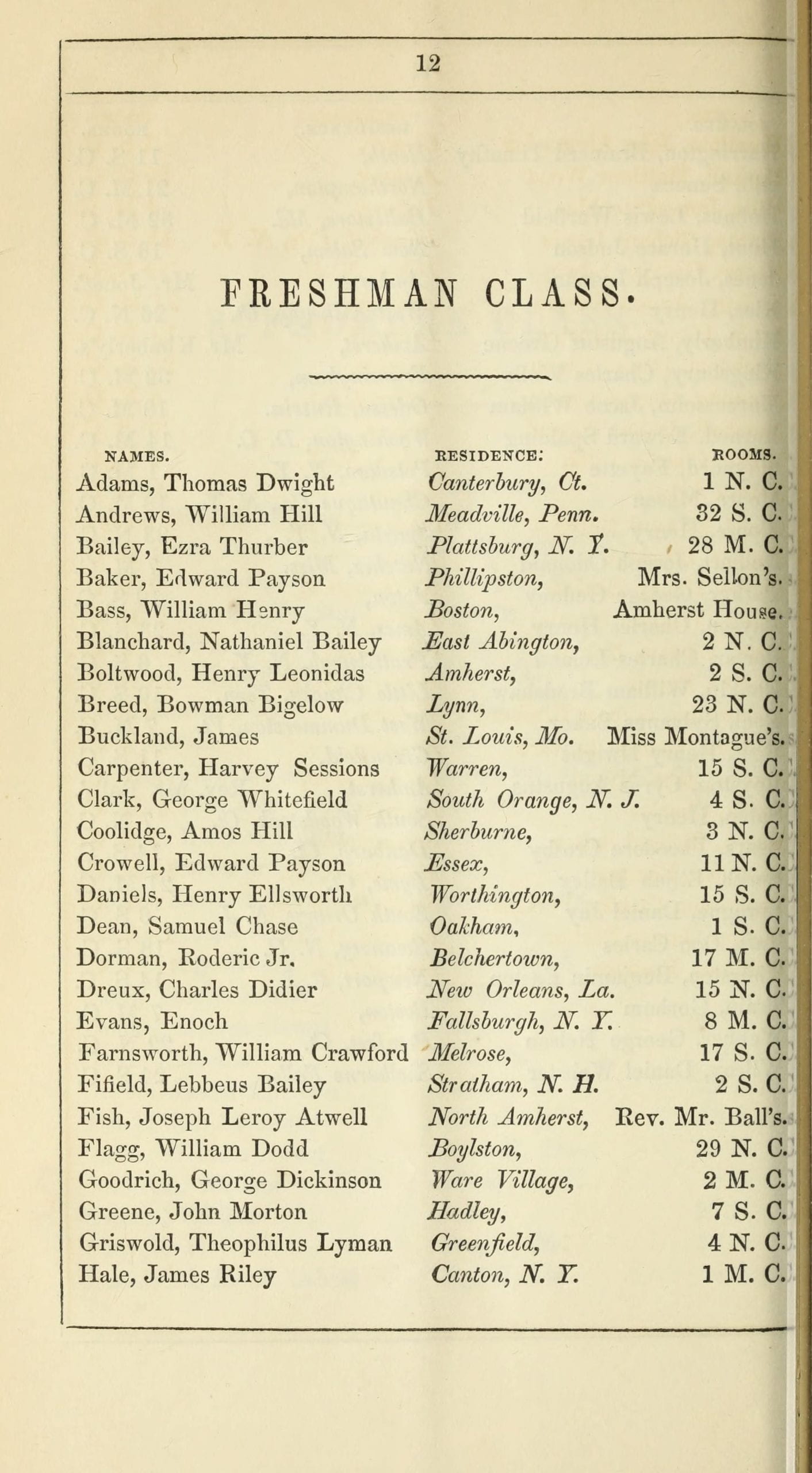
A glance at this list of the Freshmen who entered college in the fall of 1849 shows the majority are from Massachusetts, but we have students from as far away as New Orleans and St. Louis. Gould lived in 8 Middle College while his friend Austin Dickinson lived in 31 South College, even though the family home was mere blocks from campus.
Catalogs often end the list of students with a brief statistical summary as in this example from 1885:

Although this summary includes nine students from “Other Countries,” those students are likely the children of American missionaries working abroad and not students native to those places. In this instance, the two students from China were the Woodin brothers, Edwin (Class of 1885) and Herbert (Class of 1888), whose parents, Rev. Simeon and Sarah Woodin, worked as missionaries in “Foo-Chow, China.”
Notice the appearance of Greek letters to indicate students’ residence in their fraternity house. By the 1920s, the dominance of fraternities at Amherst is apparent at a glance:
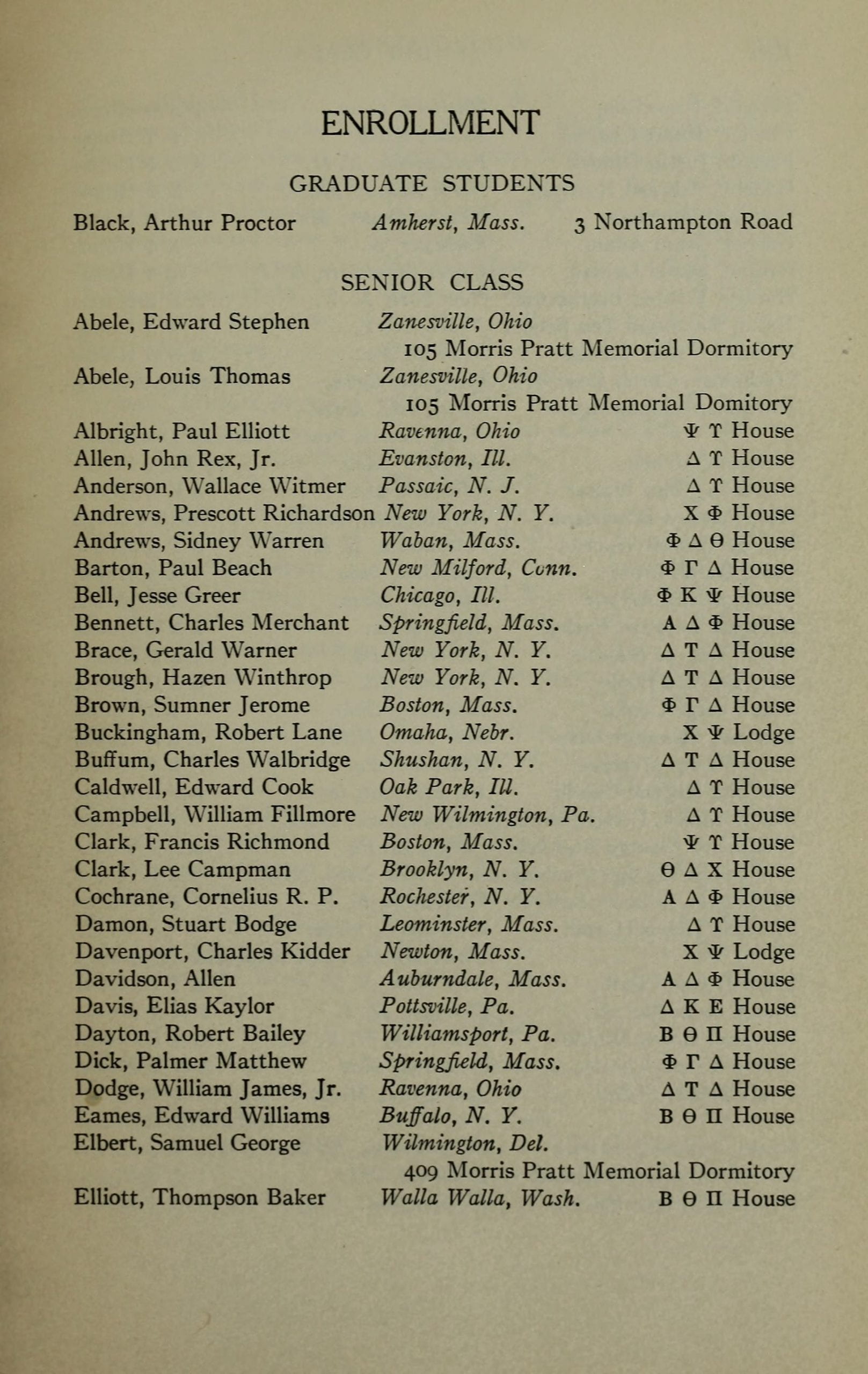
Catalogs are also an excellent resource for tracing changes in the Amherst curriculum over time. There have been many notable changes, such as the introduction of the “New Curriculum” in fall 1947. The changes to requirements were so significant that the catalog has different rules for “the class of 1950 and preceding classes” and “the class of 1951 and succeeding classes.” It also still includes instructions for pursuing a Master of Arts degree.
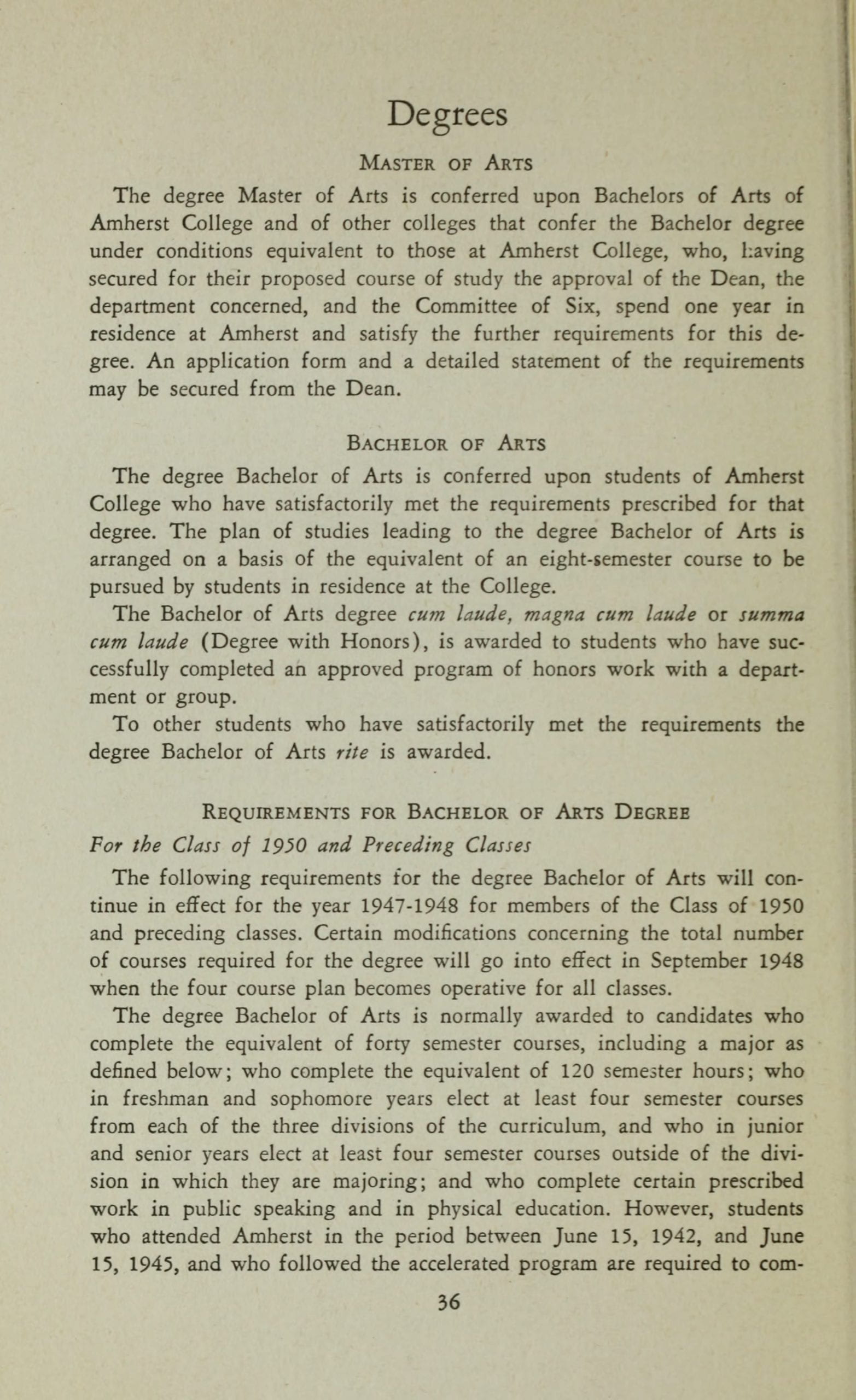
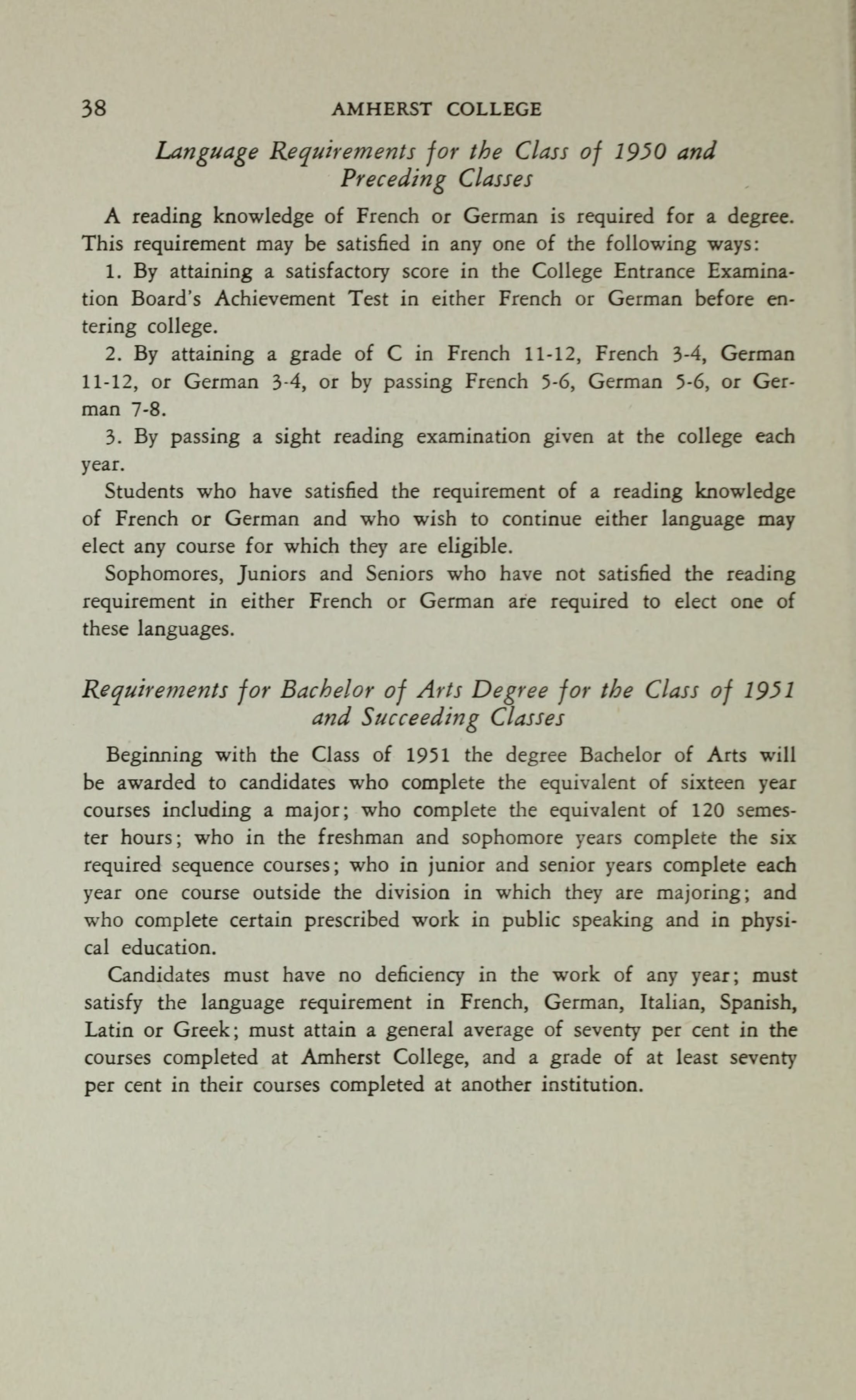
In addition to the way these changes are presented to the students, scholars can now dive into the faculty meeting minutes to see the behind the scenes work by the faculty to shape and revise the curriculum.
This sample course of study from 1829-30 shows the prescriptive nature of the curriculum in the early years — no electives whatsoever:
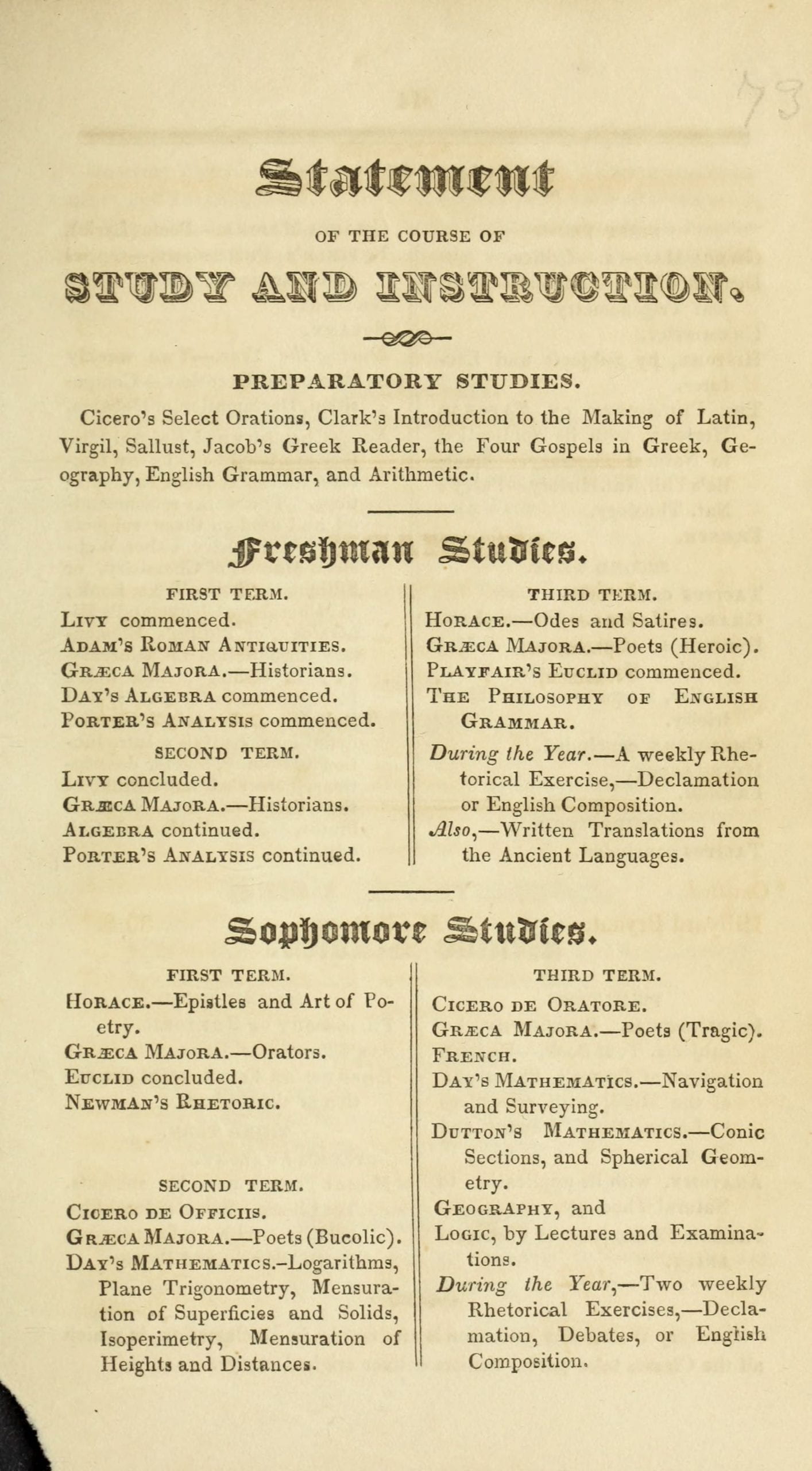
By the time we reach the 1966-67 academic year, electives and options are plentiful but there are still some core course requirements. Note that, as in the 1947-48 catalog, changes in the curriculum meant different requirements for different graduating classes.
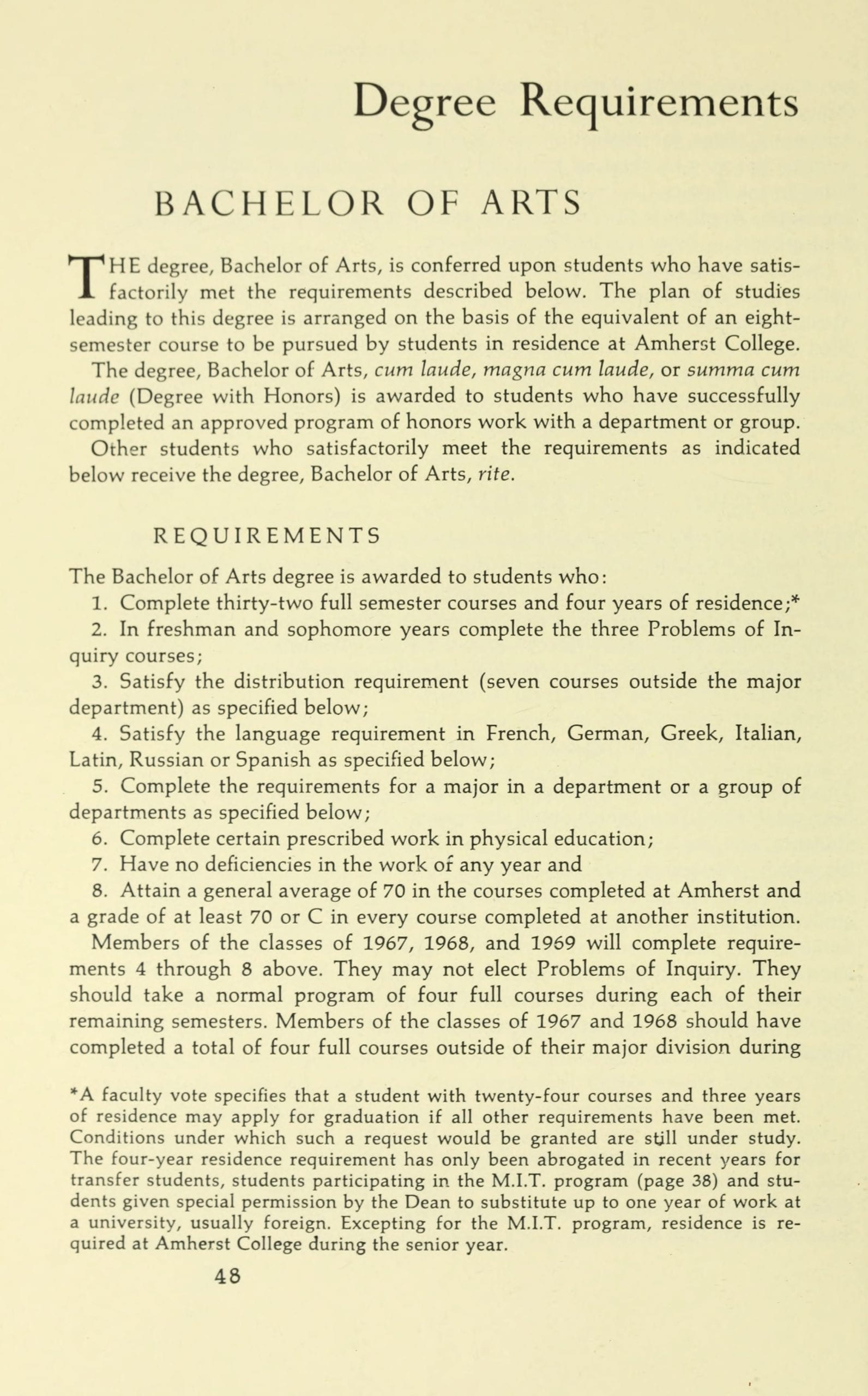
The summary of enrollment for 1966-67 reveals the further growth and geographical spread of the student body.
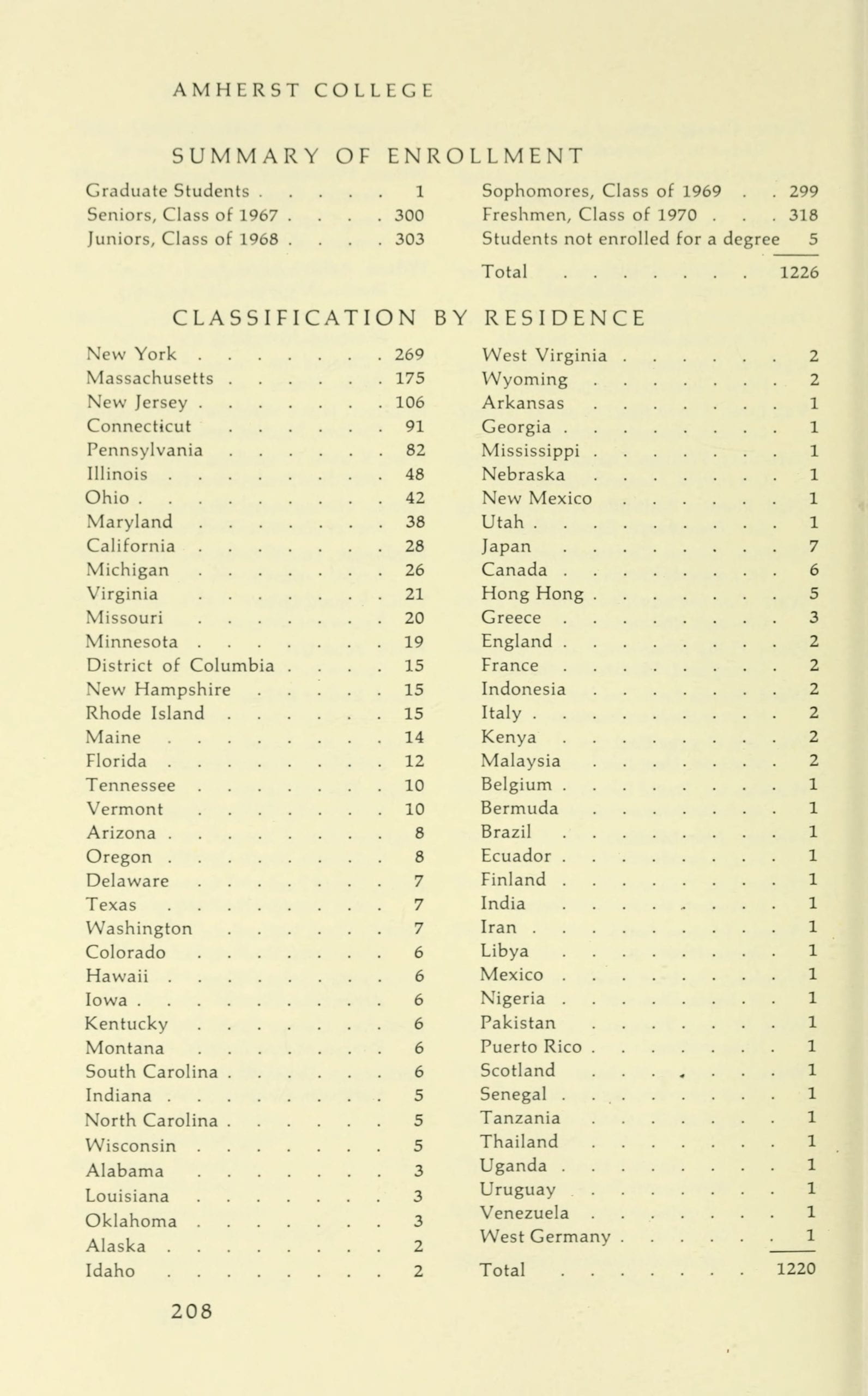
This quick look at catalogs merely scratches the surface of what they can tell us. You can track the arrivals and departures of individual faculty members, track the introduction and revision of individual courses, trace the growth and development of academic departments (such as this brief history of Black Studies at Amherst), and review changes in admission requirements and tuition. Calendar information is also easily found in the catalog if you want to know when classes started or when commencement was scheduled for a particular year.
One of our goals for the upcoming Bicentennial celebrations is to make as much material about college history available as widely as possible. Rather than creating a monolithic new history of the school, we encourage our community to explore that history for themselves.
